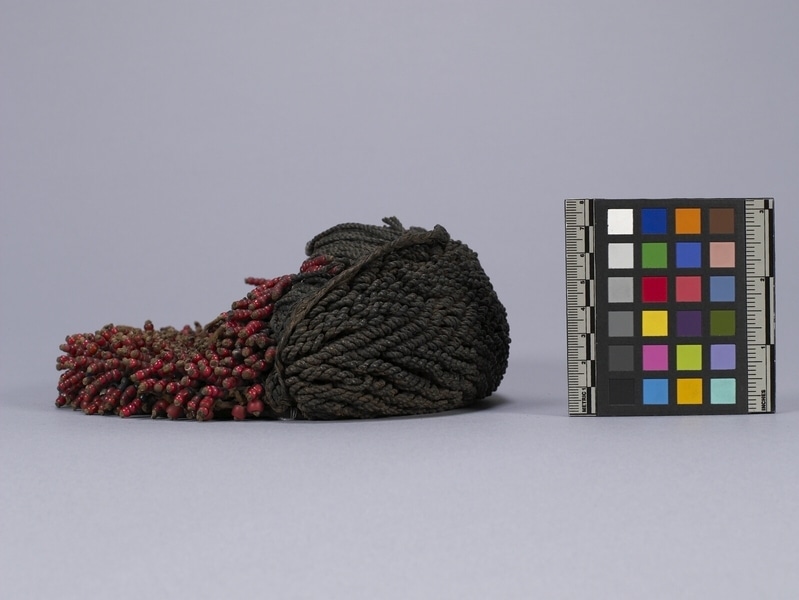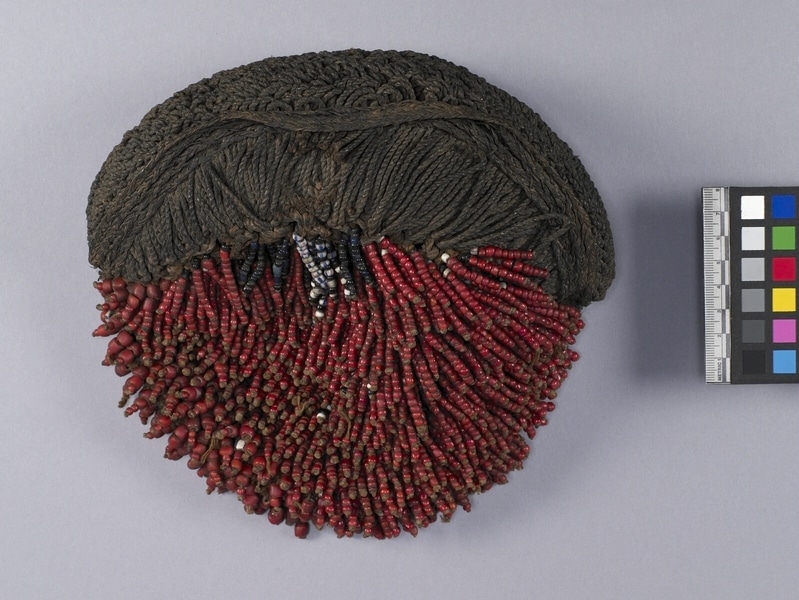Wig Item Number: Ac226 from the MOA: University of British Columbia



Description
A fitted rounded dark brown twisted fibre cord and bead cap. One side is thickly woven with a pattern of diagonal rows formed by long loops pressed together to create depth. Side is topped by braided grass(?) band. From this, lengths of fine twisted fibre cord (some broken away) join this side to a thick woven fibre side with beads: cotton(?) cord tied on to weaving brought through to the top and short ends strung with various-sized red beads. Dark blue beads, and white and blue-striped beads strung at cap's top. Rim is length of twisted cord wrapped around circumference.
History Of Use
Wigs served multiple purposes, such as illustrating how women wear their hair, or to practice women's hair styling techniques. They could also serve as part of a ritual, such as ones about likishi (female ancestors), or at political demonstrations that included symbolic wigs. In some rituals, Chokwe men wore wigs while performing to impersonate Pwo, the incarnation of the female ancestor. This wig- which likely represented Pwo based on the colouring, beads and patterns-would have been used in ritual dances that honour female fertility, motherhood, or femininity.
Narrative
The collector, Nellie Taylor, served as a nursing missionary (1900-1920), first with the Ovimbundu at Bihe, then with the Chokwe at luma Kasai. She belonged to a group who sponsored several missions across Central Africa from 1881-1931.
Item History
- Made in Luma Kasai, Angola before 1920
- Collected between 1900 and 1920
- Owned by Nellie Taylor
- Owned by Gladys G. Cameron before January 12, 1979
- Received from Gladys G. Cameron (Donor) on January 12, 1979
What
Who
- Culture
- Chokwe
- Previous Owner
- Nellie Taylor and Gladys G. Cameron
- Received from
- Gladys G. Cameron (Donor)
Where
- Holding Institution
- MOA: University of British Columbia
- Made in
- Luma Kasai, Angola
When
- Creation Date
- before 1920
- Collection Date
- between 1900 and 1920
- Ownership Date
- before January 12, 1979
- Acquisition Date
- on January 12, 1979
Other
- Item Classes
- beadwork
- Condition
- fair
- Accession Number
- 0509/0003